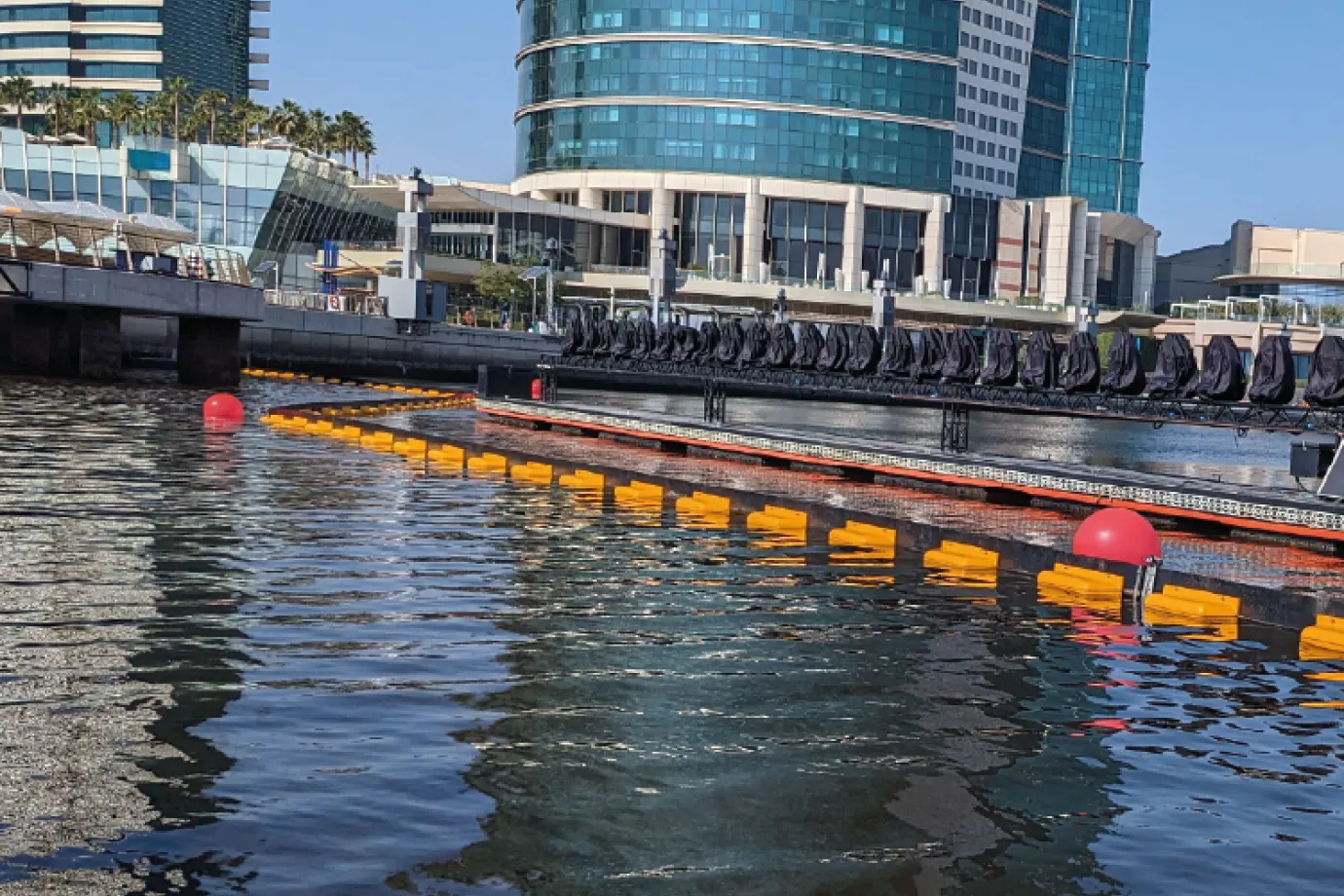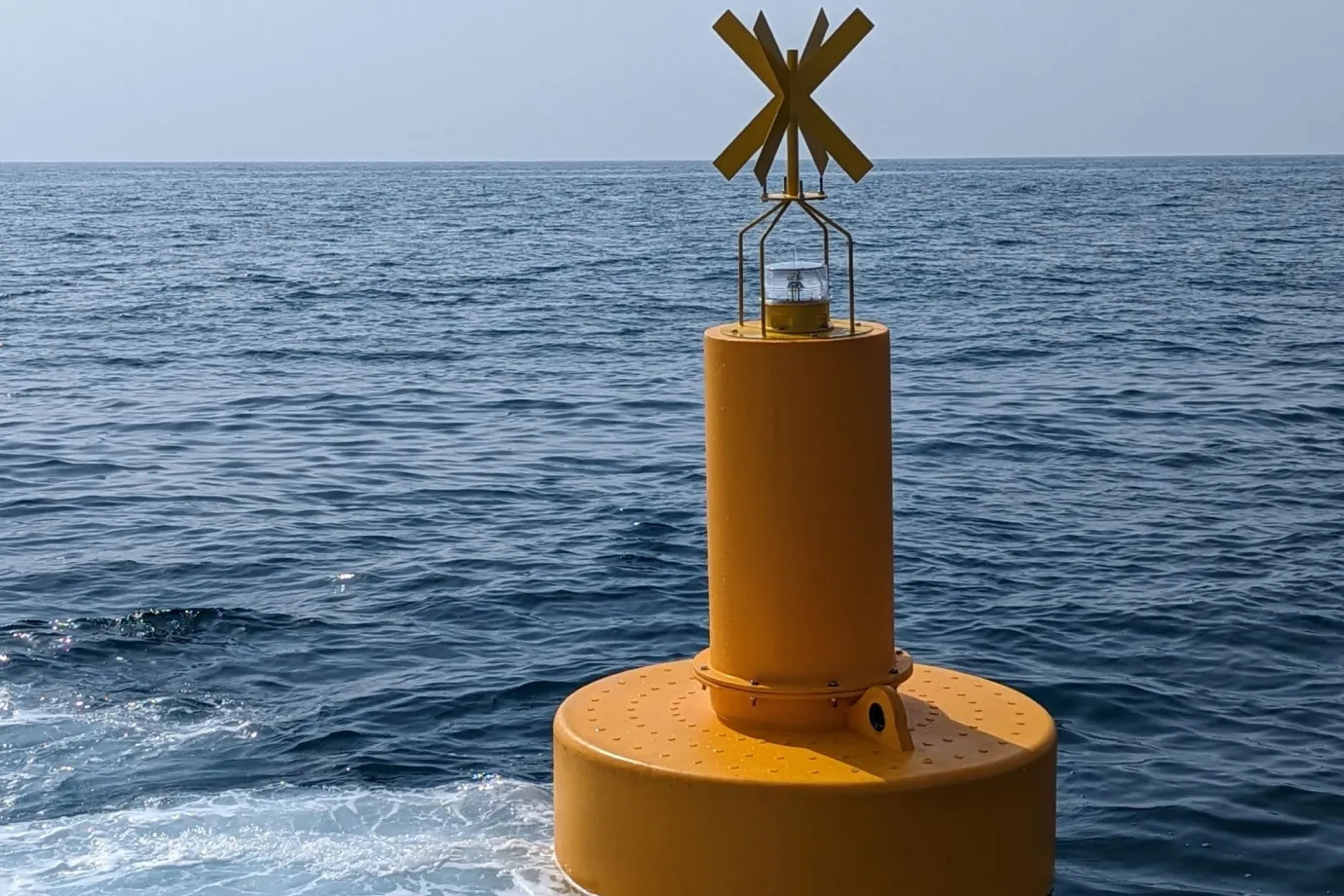Oil spills are disastrous and may inflict horrendous damage on marine and coastal ecosystems. Effective containment and response measures play a huge role in mitigating such environmental catastrophes. Among these is one of the most vital tools in the arsenal against oil spills: the oil containment boom. Essentially, such floating barriers were created to control the spread of oil on water surfaces, which helps protect sensitive environments and facilitates recovery operations. Strategic oil boom deployment is critical in minimizing an oil spill’s ecological impact and preserving our oceans and shorelines from harm.
This Blog post will walk us through one such technology in action: how oil containment booms work? We will go into the mechanism of oil spill containment booms, as one of the main types of oil booms, through to oil containment boom types, and find out the mechanism of oil spill containment booms in real-life scenarios. We will also provide guidance on selecting the right boom for any spill scenario based on the size of the spill or other water conditions.
How Oil Containment Booms Work?

Oil spill containment booms are one of the main types of oil booms, designed to contain oil spills on water surfaces. This equipment is essential in controlling the spread of spilled oil over the water surface during the processes of cleanup. In simple terms, they control and contain oil slicks, making it easy to remove or recover the spilled oil. The booms are laid in a circle (sometimes in a line) to contain the oil from reaching shorelines or spreading into any other bigger areas.
Oil spill containment booms are also deployed in the open ocean, coastal waters, harbors, and rivers. This equipment can be very effective in securing sensitive environmental areas such as marshlands, beaches, and wildlife habitats from oil spills. Their effectiveness depends upon a number of variables related to water currents, wind conditions, and the type of oil spilled.
Thus, oil containment booms provide a physical barrier so that the impact of an oil spill will be minimal to the environment, facilitating easier and quicker cleaning-up processes and making sure that marine and coastal ecosystems are conserved. The booms have different types and designs depending on the environment and circumstances of a particular spill.
4 Main Types of Oil Containment Booms

Oil spill containment booms are the most integral component in a system of boom containment that locates, confines, and restricts oil spillages in order to prevent further spread and consequent environmental damage. In this respect, a number of types of oil containment booms exist, adjusted to match certain conditions and applications. These oil containment boom types are as follows:
Solid Floatation Oil Booms
Solid floatation oil booms include a cylindrical foam-filled or plastic-filled floating device and tension members, usually chain or cable, to contribute strength and stability. The floats are covered by a protective sheet (typically Polyvinyl Chloride or PVC), not only to contain spilled oil on the water but also to prevent the oil or material inside the floats from leaking. These types of oil containment booms are often used inshore and offshore, ensuring heavy-duty and durable control of oil spills, even in the long term.
Fence Oil Booms
As its name suggests, fence oil booms act as a fence to prevent spilled oil from spreading on the water surface. They are equipped with a flat floating device, created from metal, foam, or plastic. Like solid floatation oil booms, the floats of these oil containment boom types are covered by PVC sheets (or other materials) to prevent leakage of oil or the materials inside the floats.
They also include chains or cables as the tension member to keep the boom strong and stable in place. Due to the higher freeboard fence oil booms have, they are capable of controlling the spill of oil when it spreads on the water’s surface and just below. These booms are ideally suited for long-term installation and heavy-duty oil spills in calm waters with low to medium currents.
Inflatable Oil Booms
In some cases, it is not required to install an oil containment boom permanently. However, oil spills may occur suddenly, making them difficult to control in the moment. Inflatable oil booms, also known as emergency oil booms, are ideal for such situations. They are equipped with a compressor system (including a coil or spring), which automatically deploys the oil containment boom on the water. These types of oil containment booms are inflated by air in just a few seconds and deployed on the water to prevent oil spills in emergency situations. After containing oil spills, they are rolled up again in the compressor, being ready for the next emergencies.
Curtain Booms
The spilled oil on the water surface may be combined with other pollutants, like silt and sediment derived from marine construction projects. The combination of sediments and oil makes them heavier and allows them to float not just on the water surface but also deeper. In such cases, curtain booms are offered to control both oil spills and sediment. Equipped with a floating device (like the solid floatation oil booms) and a curtain underneath, these booms contain oil spills on the water and deeper sediment. The curtain is mostly designed with plastic sheets (typically PVC) to ensure the containment of oil and sediment.
Choosing the Right Type Oil Spill Containment Booms

Choosing the right classification of oil spill containment boom is an important decision for any oil-spreading response in terms of containment effectiveness and environmental protection. A number of factors have to be taken into consideration to make sure the proper boom is chosen, matched to the specific conditions and requirements of a spill event. We will cover major factors that need to be considered, compare materials and designs, and give recommendations on choosing the right boom for various scenarios.
Spill Size
The size of an oil spill determines the extent and nature of the boom to be deployed. Larger spills will need more heavy-duty, high-capacity booms to contain far-reaching oil. Smaller ones will require less heavy and more easily deployable booms.
Water Conditions
- Calm water: Foam-filled or solid-flotation lightweight booms are generally satisfactory in calm water situations, such as harbors, marinas, and sheltered bays.
- Moderate to High Currents: Open seas, rivers, or other strong currents or wave actions require more sturdy booms, which maintain greater stability and anchoring capabilities, typical harbor oil containment booms.
- Heavy Seas: Under rough sea conditions, highly buoyant and stable booms that can bear turbulent waters are required.
Environmental Sensitivity
Highly environmentally sensitive areas, such as marine reserves, coastal wetlands, and protected habitats, require booms that provide reliable containment to prevent oil from reaching such fragile ecosystems. Long-lasting and more permanent solutions, like harbor oil containment booms, are mostly preferred in such cases.
Materials and Designs Comparison for Types of oil containment booms
Solid flotation oil booms are made from UV-stabilized PVC with foam for buoyancy, offering quick, low-cost deployment but limited durability in rough waters. Fence oil booms use heavy-duty PVC with chain ballast, making them stable and long-lasting for calm to medium currents, though heavier and harder to deploy. Inflatable oil booms are lightweight, fast-deploying, and ideal for emergencies in both inshore and offshore areas but need regular maintenance checks. Curtain booms combine oil containment and silt curtain functions to block both oil and sediment, offering efficient dual protection but at a higher cost.
Guidelines for Selecting Oil Spill Containment Booms Type
- Large Spills in Open Waters:
For large open-water spills, solid floatation oil booms are recommended. The booms must be heavy-duty and stable enough to contain a high capacity of oil in varying conditions of water. They are built strong to withstand every current or rough seas, hence suitable to contain or control large spills in open sea conditions.
- small spills in calm waters:
Fence oil booms can be easily deployed, so they are well-suited for sheltered areas like harbors and marinas. In these areas, they efficiently contain small spills of oil from spreading and causing further damage to the environment. Their higher freeboard also offers the best containment, especially in sheltered areas where the amount of oil spills is larger.
- Emergency Response:
Inflatable oil booms are designed explicitly to be rapidly deployed, and so they are best suited for instant spill response operations. These booms can be inflated at the site in no time, and thus the oil spill can be contained in no time. Rapid deployment is essential to avoid the spreading of oil from the source during the initial period of leakage, causing less environmental pollution and enabling easier cleaning procedures.
- Long-Term Installations:
Permanent or semi-permanent booms may be most useful in areas that suffer frequent spills or where there is a requirement for continuous protection. Permanent or long-term solid floatation oil booms and fence oil booms are ideal for areas where there is a requirement for permanent protection. They have both been reliable and have consistently performed for a long time. They are also designed to withstand environmental elements for a long time and, therefore, are suitable for high-risk areas such as shipping terminals and industrial sites.
- Special Conditions
Curtain booms are actually a custom-designed classification of oil spill containment booms that are purposely engineered to contain both oil spills and sediment at the same time. Due to their unique design and controlling system, curtain booms are well-suited for the special conditions, where the oil and sediment are spreading on the water’s surface and even deeper. Moreover, most of them can be customized based on the project’s requirements to provide enhanced performance.
Conclusion; Oil Containment Boom Mechanism
Oil spill containment booms are among the most significant tools against marine and coastal oil spills. In this respect, they greatly reduce the environmental impact of such spills since they can contain and control the spread of oil, hence saving ecosystems and ensuring effective clean-up operations. From solid floatation booms to curtain booms, these various types of oil containment booms accommodate special conditions and need to be an effective solution for any spill scenario. Carefully assessing considerations like the size of the spill, water conditions, and environmental sensitivity will enable responders to select the appropriate boom for any given task at hand in the scope of their spill response capability.
Not only do oil containment booms contain immediate benefits, but they can also make some extremely critical contributions toward the protection of biodiversity and the health of marine habitats. In conclusion, the oil containment boom mechanism and its types define how the oil spill shall be managed with its proper deployment and maintenance. Indeed, floating barriers are not lines of defense but guarantee the preservation of marine and coastal ecosystems for generations to come.
Oil containment booms are typically made from durable, UV-resistant materials such as PVC, polyurethane, or reinforced rubber. The choice depends on factors like water conditions, oil type, and required longevity.
Yes, many types of oil spill containment booms can be reused if properly cleaned and inspected. However, absorbent booms are usually single-use, as they retain oil within their structure and cannot be effectively cleaned for redeployment.




